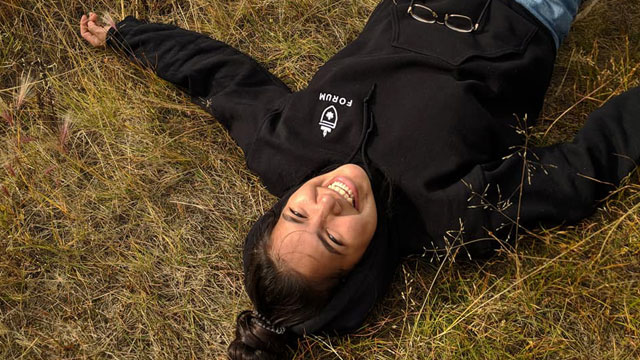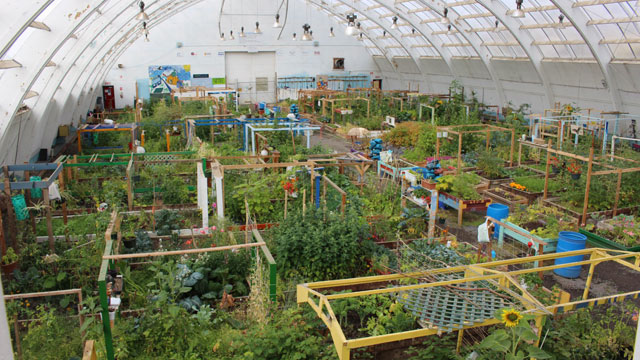Mariah MacDonald does not have access to the same foods as her ancestors did a generation before her.
“I’m anxious,” she said. “With climate change you don’t really know what the environment is going to be like in a few years. More southern weather patterns are coming north the animals we are getting have changed.
“There was a cougar spotted in Whitehorse and cougars are not from that area.”
She’s Champagne and Aishihik First Nations and Dene, raised in Haines Junction, Yukon and is currently living in Whitehorse as she completes her college studies.
The days of living in a land of plenty are behind her.
“I remember when I was six, up in Klukshu (YK) the river was just red with sockeye salmon,” she said. “Now, whenever I go up to Kluane, around that salmon time when they mate there isn’t much fish. The last time I seen fish I only saw one or two swimming around.”
MacDonald explained, in resignation, that she may never find out where the fish have gone, because Elders with knowledge of the migratory routes have passed on.
In the north country foods are tied to the identities and survival of communities and the physical, mental, social and economic health of individuals.
But Indigenous diets are rapidly changing.
“The food that we have available to us is really expensive, so it is either buy the expensive food or drive an hour and a half to Whitehorse and then another hour and a half to come back,” MacDonald said.
(Inuvik Community Greenhouse has plans to establish a year-round garden in the community. Photo: Charlotte Morritt-Jacobs/APTN)
In an old hockey rink located 200 km north of the Arctic Circle, a raised garden plot was built and can produce enough potatoes to last the local soup kitchen eight months.
A buffet of crops grows for the people of the Beaufort Delta, Northwest Territories, the traditional lands of the Inivualuit and Gwicih’in Dene.
Summit delegates are touring the largest community green house in the territory.
Since germination more than 20 years ago, the 371 square metre garden is run by the not-for-profit Community Garden Society of Inuvik.
It boasts community plots on the main floor and a commercial greenhouse on the second floor.
Garden plots are available community members and there are sponsored plots for elders, group homes, schools and other local charities.
The capabilities of the space astound MacDoanld.
“This garden is a good learning opportunity. It would be nice to see a garden like this in my hometown. We do have a greenhouse but it isn’t this big and it isn’t able to feed families,” MacDonald said.
There is a bigger push to teach northerners how to grow their own food.
In 2017, the territorial government introduced the first-ever agricultural strategy.
In the territories, a few corporations control the food market, and both the monopoly and the transportation costs mean northerners have to fork out a lot of money on groceries..
(Students at the summit get a lesson inside the greenhouse in Inuvike. Photo courtesy Ecology North)
Summit delegate, Myah Martin, a summit delegate can either shop at Northmart or Stantons but she has walked in to either of the two grocers to find the selves were bare.
“We rely on the ice roads. We have the fruit guy who comes in but sometimes they aren’t able to come here when the roads close because the roads are too warm and it’s muddy. Sometimes we don’t have eggs or milk or vegetables,” Martin said.
She noticed the effect that transporting food from the south has on her territory.
“How they [Territorial highway and roads department] overdo it with gravel on the highways like the Dempster. It’s crazy all of the gravel on the outside of the road. It gets pushed off to the side in the summertime as the snow melts, piles up and ruins the trees,” she said.
For the delegates, the concept of food security goes well beyond the nutrition value and purchasing power of the foods available at local supermarkets.

(Anonda Canadian says that she does not live on the land but with the land, and that her connections to the Dehcho, NWT are a part of her history and her culture. Photo courtesy: Ecology North)
Anonda Canadian wants to hone in on the changes she’s already seen in her traditional territory of the Dehcho, NWT, that is affecting wildlife.
“It is really like disheartening to see the effects of it because the river is low so you can’t really fish or set a net. In the Mackenzie river,” Canadian said.
It’s increasingly difficult to practice the custom of food sharing after harvests.
“I grew up eating duck rabbit and moose meat. As the years went by the food on my plate became pork and beef which is not something my people, we didn’t have that up here so we didn’t eat it,” Canadian said.
Warmer winter temperatures also increase the layers of ice in snow. The quick melting speeds in the spring make going on the land dangerous.
“Original hunting places, you can’t go there anymore because of how fast the ice travels. This past spring, my father went to go hunting, usually you would go by skidoo to get to the place but he couldn’t even go by skidoo because the water went so fast,” she said.
Country food is not only a health food choice for Indigenous northerners, it is an inherent right.
Canadian acknowledges that moving towards sustainable agriculture is a good step forward, but to expect every community and leadership to immediately push for community gardens is unrealistic and unfair.
“Before you even get on the topic of leaders in the north you have to look at the roots – Residential school and intergenerational trauma. You have to tackle all the things that came with it like low self esteem, the homes, addiction and all this pain that comes with it,” she said.
Southern Canadians may not feel the same food insecurity yet, but with 80 per cent of fresh water derived from snow in the arctic and subarctic of Canada it won’t be long before fresh water for all food production will be compromised.
MacDonald has already noticed the loss of snow accumulation in her home community.
“Growing up during the summer the snow would always be on the Dezadeash mountains no matter what time of year. Now if you were to go to Haines Junction you would see most or all of the snow is not there,” she said.










